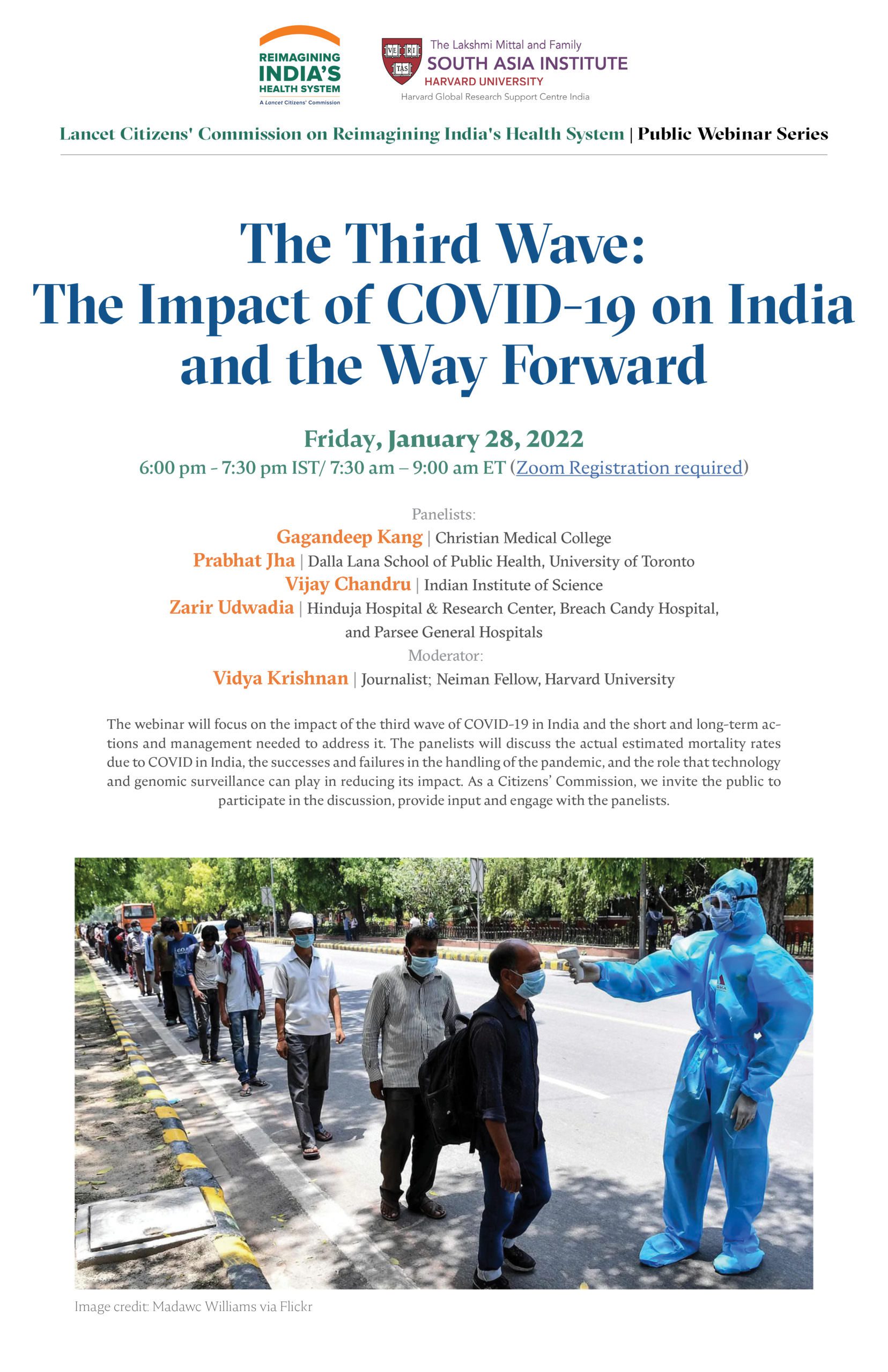
Dr. Prabhat Jha, Professor in Disease Control at the Dalla Lana School of Public Health, University of Toronto.
As the omicron COVID-19 variant sweeps the globe, epidemiologists and health professionals are contemplating lessons learned from the past waves, and how to mitigate future impacts. The Lancet Citizens’ Commission’s January 28 webinar, “The Third Wave: The Impact of COVID-19 on India and the Way Forward,” will focus on the third wave of COVID-19 in India, with a panel discussion on the mortality rates; the successes and failures in the handling of the pandemic; and the role that technology and genomic surveillance can play in reducing its impact.

Prabhat Jha, Professor in Disease Control at the Dalla Lana School of Public Health, University of Toronto and one of the event panelists, gave the Mittal Institute some insight into what he will focus on during the talk. As an epidemiologist, Dr. Jha studies the major causes of death in developing countries – including those from COVID-19. He is the lead author of a study published in Science that estimates India’s total COVID-19 deaths are “substantially greater than estimated from official reports.” He shared more on his survey in the interview below.
Mittal Institute: Dr. Jha, thank you for your time. Your study calls into question India’s COVID-19 reporting metrics. What first led you to investigate this subject?
Prabhat Jha: India’s national COVID death totals remain undetermined. To fill this gap, we examined data from three reliable data sources to determine how much death rates have risen during COVID, i.e., how many excess deaths there were above the rates of expected deaths in a non-pandemic year. We looked at data from India during the first viral wave, which was in the fall of 2020, and the second viral wave in the spring of 2021. The logic is that deaths from all causes during these peak pandemic transmission periods are likely nearly all caused by SARS-CoV-2 infection.
Mittal Institute: Can you share your methodology with our community – how did you gather your survey data, and how did you come to your conclusions?
Prabhat Jha: Using an independent nationally representative survey of 0.14 million (M) adults, we compared COVID mortality during the 2020 and 2021 viral waves to expected all-cause mortality. COVID constituted 29% (95%CI 28-31%) of deaths from June 2020-July 2021, corresponding to 3.2M (3.1-3.4) deaths, of which 2.7M (2.6-2.9) occurred in April-July 2021 (when COVID doubled all-cause mortality). A sub-survey of 57,000 adults showed similar temporal increases in mortality with COVID and non-COVID deaths peaking similarly. In addition, two government data sources found that, when compared to pre-pandemic periods, all-cause mortality was 27% (23-32%) higher in 0.2M health facilities and 26% (21-31%) higher in civil registration deaths in ten states; both increases occurred mostly in 2021. The analyses find that India’s cumulative COVID deaths by September 2021 were 6-7 times higher than reported officially.
Mittal Institute: At one point, it appeared that India’s COVID-19 impact was far lower than the rest of the globe. Now, with your findings, how does India’s death rate?
Prabhat Jha: The three data sources consistently suggest that the actual COVID death toll was six to seven-fold higher than India’s official reports of about 4,40,000 COVID deaths by September 1, 2021. It places India’s COVID death rates in line with that in the US or Brazil, where death registration is far more complete.

An ambulance rushing to the hospital in Hyderabad during the COVID-19 pandemic. Image by Lalithmalhaar Gudi.
Mittal Institute: Do you plan to continue this survey as it relates to the Omicron wave?
Prabhat Jha: Yes, we will continue to monitor deaths using these data sources. The Omicron variant of the virus appears, thankfully, to cause fewer hospitalization and death than did the catastrophic delta wave of April-June 2021. The important point is that mortality data are a “GPS” for better health by providing information on who died, how and when, public health strategies can adapt and their success in reducing premature deaths may be monitored. Counting the dead helps the living.
Mittal Institute: You have suggested India’s registrar-general include a question about COVID-19 deaths in the forthcoming national census. Will this plan be adopted, to your knowledge, and are there any other ways that you can suggest the Indian government might improve its reporting metrics?
Prabat Jha: Our results are controversial. The Indian Government could produce more direct evidence on COVID deaths by restarting its Sample Registration System, a continuous demographic study covering about one percent of the population. Moreover, given COVID’s devestation, it would be good to add a simple question to the 2022 census on families having any death in 2020 or 2021 and, if so, the age, sex, and date of such deaths.
